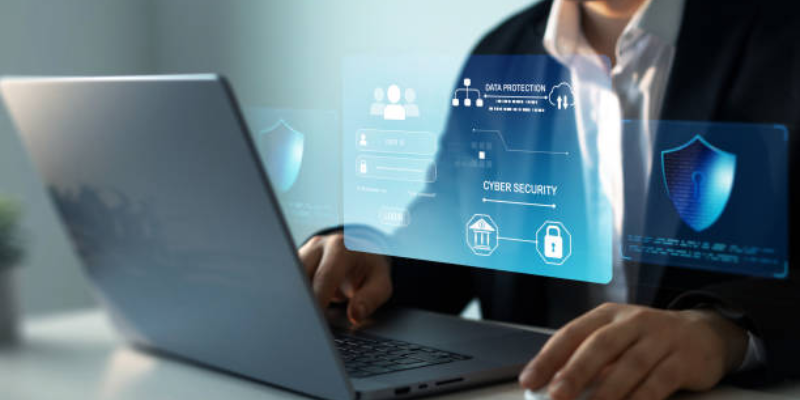Basics of Network Security for Everyday Users
Let me start by telling you a story. A few years ago, my neighbour's email account was hacked. They lost family photos, sensitive documents, and even money from their bank account. The worst part? It all began with a single suspicious link they clicked out of curiosity. This isn't rare. Every day, ordinary people like you and me face threats online—often without even realizing it. That's why I'm writing this guide. Network security isn't just for tech experts. It's for everyone who uses the internet. Let me break it down in simple terms so you can protect yourself.
Why Should You Care About Network Security?
Imagine your home. You lock doors, close windows, and install an alarm system. Your digital life needs the same care. Network security safeguards your devices, data, and online activities from hackers, scams, and accidents. Think about it: your emails, bank details, social media accounts, and even smart home devices are connected to the internet. If someone breaks into your network, they can steal your identity, drain your accounts, or spy on you. Scary, right? But don't panic—knowledge is power.

The Three Pillars of Network Security
You’ve probably heard terms like “encryption” or “firewalls,” but let’s simplify. At its core, network security revolves around three key ideas: confidentiality, integrity, and availability.
Confidentiality is about keeping your data private. Think of it like a diary with a lock. Only people with the key (or password) should read it. Encryption tools scramble your data into a secret code, making it unreadable to hackers.
Integrity means ensuring your data stays accurate and unchanged. Imagine sending a message to your boss about a meeting time. If a hacker alters the time without you knowing, chaos follows. Tools like checksums and digital signatures act like invisible stamps, confirming your data hasn’t been tampered with.
Availability guarantees you can access your data when needed. Have you ever tried opening a website during a cyberattack and seen an error message? That's a breach of availability. Hackers might overload servers (like a traffic jam) to shut down services. Backups and strong infrastructure keep your data accessible.
Authentication and Authorization: Your Digital ID
Before granting access to your accounts, apps ask, “Who are you?” and “What can you do?” This is authentication (proving your identity) and authorization (defining your permissions).
Passwords are the most common authentication method, but they’re often weak. “123456” or “password” are easy to guess. Instead, use long phrases with numbers and symbols, like “PurpleTiger$2025!” Enable two-factor authentication (2FA) for extra security. This adds a second step, like a code sent to your phone, making it harder for hackers to break in.
Authorization is like a hotel key card. It limits access to specific areas. For example, your email account might let you send messages but not delete old ones unless you verify your identity again.
Common Threats You Need to Know
Hackers use many tricks to exploit weaknesses. Here are the most frequent threats:
Malware: Short for "malicious software," malware includes viruses, worms, and ransomware. It can steal data, lock your files, or spy on you. Have you ever clicked a pop-up ad that looked legit? That could've been malware in disguise.
Phishing: Fake emails or websites designed to steal passwords. A common example? A message claiming to be from your bank, urging you to “verify your account.”

Ransomware: Imagine your files getting encrypted, with a hacker demanding payment to unlock them. This often happens through infected email attachments.
DDoS Attacks: Hackers crash a website or service with traffic. While this affects businesses more, it can also disrupt your favourite apps.
Public Wi-Fi Risks: Free Wi-Fi at coffee shops is convenient but risky. If the network isn't secure, hackers can intercept your data.
Protecting Your Devices and Data
Now that you know the threats, let’s talk solutions.
Update Everything: Software updates patch security holes. Ignoring them is like leaving your front door unlocked. Set devices to update automatically.
Use Strong Passwords and a Password Manager: Create unique passwords for each account. A password manager generates and stores complex passwords so you don't have to remember them.
Enable a Firewall: This acts as a barrier between your device and the internet, blocking unauthorized access. Most devices have built-in firewalls—turn them on.
Backup Your Data: Use external drives or cloud services to save copies of important files. If ransomware strikes, you won’t lose everything.
Safe Online Habits to Adopt
Security tools alone aren't enough. Your habits matter, too.
Think Before You Click: Suspicious links in emails or messages? Delete them. Verify sender addresses.
Limit Social Media Sharing: Posting your pet’s name or birthdate? Hackers use these to guess passwords.
Avoid Free Downloads: Pirated software or “cracked” apps often contain malware. Stick to official app stores.
Monitor Accounts: Check bank statements and app activity regularly. Report unauthorized transactions immediately.
The Dangers of Public Wi-Fi
Public Wi-Fi networks are a goldmine for hackers. They can intercept passwords, credit card numbers, or messages. If you must use public Wi-Fi:
Avoid logging into sensitive accounts (like banking).
Use a VPN (Virtual Private Network) to encrypt your traffic.
Turn off file sharing and automatic Wi-Fi connections.
What to Do If You’re Hacked
Even with precautions, breaches can happen. Stay calm and act fast:
Disconnect: Turn off Wi-Fi or unplug your device to prevent further access.
Change Passwords: Update passwords for affected accounts.
Scan for Malware: Use antivirus software to remove threats.
Report It: Contact your bank, service providers, or local authorities.

Staying Ahead of Cybercriminals
Cybersecurity is a marathon, not a sprint. Hackers constantly evolve their tactics, so you must, too.
Educate Yourself: Follow tech news to learn about new scams.
Teach Family Members: Kids and elders are often targets. Share security tips with them.
Test Your Security: Some companies offer free tools to check if your email or passwords have been leaked.
Building a Security Mindset
Network security isn't about fear—it's about awareness. Treat your digital life like your physical home. Lock doors (use passwords), install alarms (antivirus), and avoid letting strangers in (avoid phishing). Small habits add up to significant protection.





